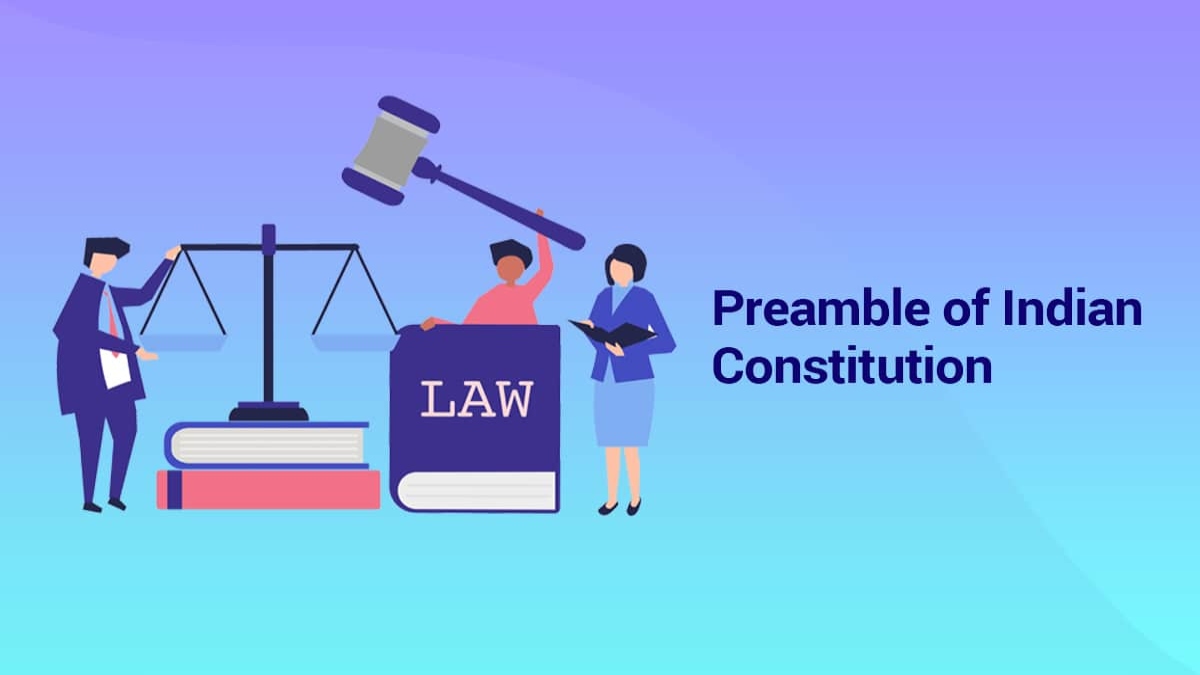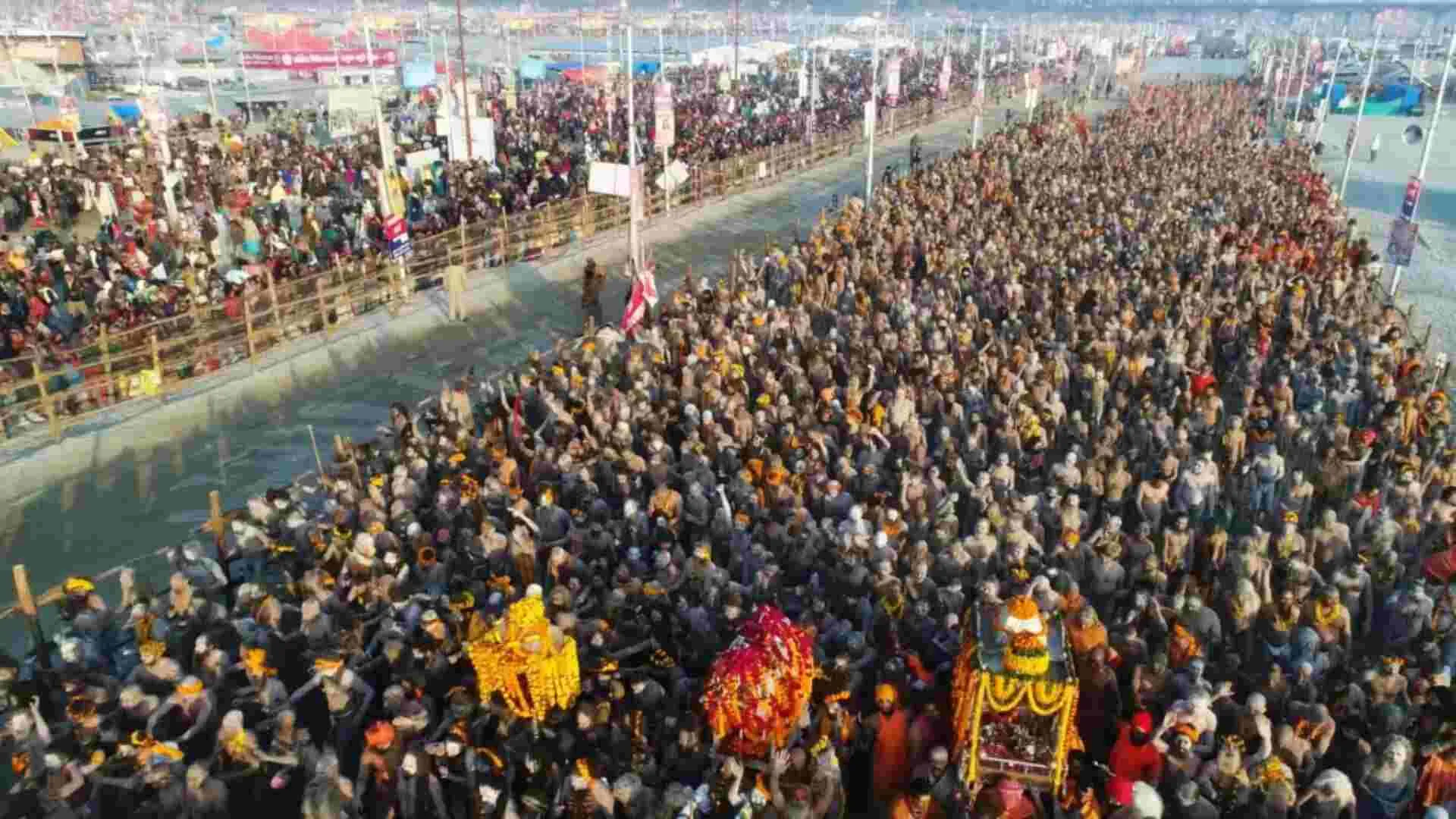INTRODUCTION
“The Preamble is the most precious part of the Constitution. It is the soul of the Constitution. It is a key to the Constitution. It is a jewel set in the Constitution”, said Pundit Thakur Das Bhargav, Member of Constituent Assembly.
Over the centuries, the singular truism which is well recognized is that the guidelines or laws to be enforced, cannot be mired in time and need to evolve so as to be relevant to the prevailing social and moral context; and in these times of rapid development our Preamble maneuvers itself into an anchor, providing a safety valve against majoritarianism and authoritarianism. The Preamble of our Constitution imparts to constitute India into a Sovereign Secular Democratic Republic and vows to secure to all its citizens Justice, Liberty and Equality while assuring the dignity of the individual and the utmost unity and integrity of the Nation.
While analyzing the anatomical nature of Preamble, it is vital to understand the Constituent Assembly debates on the structure of the Preamble which commenced from 17th October 1949, insinuating especially the declaratory, descriptive, objective and the invocative part. Dr. B.R Ambedkar profoundly advocated the correctness of the declaratory part which has been borrowed from the Constitution of USA, stating that this declaratory part separates itself from the other three parts and could be understood by a lay man. Certain arguments in the CAD on objective part were replacement of the term ‘republic’ with ‘state’, adding the word ‘independent ‘ or replacing ‘sovereign’ with it. Most importantly, the descriptive part enumerates the basic principle of our Constitution including justice, liberty, equality, fraternity as basic jewels of our Preamble. Next proposal was made for the invocative part on inclusion of the phrase ‘in the name of god’ and ‘Mahatma Gandhi’. However, such frivolous proposals were rejected in the CAD. Thus, the history of the making of Preamble is drastically escalated, for constitution is the background to foreground the Preamble.
Further, I will be dealing with the Nehruvian Approach which paraphrased the resolution regarding aims and objectives of the Preamble, including the criticisms to his draft resolution thereof. Also, I will be enunciating upon the emergence of basic structure doctrine and amendable nature of Preamble with reference to landmark judgments.
NEHRUVIAN RESOLUTION: AIMS & OBJECTIVES OF PREAMBLE OBJECTIVES RESOLUTION
On 13th December 1946, Pt. Jawaharlal Nehru modified the earlier declaration from ‘freedom of thought, belief, vocation, association and action’ to a more precise declaration. The new phrase ‘freedom of expression, faith, and worship’ was added to the Nehru’s Objectives Resolution. These freedoms were highlighted and adopted in the Preamble ad rem while discrediting the previous declaration. These ‘Objectives Resolution’ were considered momentous for two reasons. Firstly, it traced the defining ideals of the Constitution of Independent India, and secondly, it provided the framework within which the work of the constitution-making was to proceed. After eight days of debates and discussions, the resolution was adopted on 22nd January, 1947 and came into effect from 26th January 2020.
It is pertinent to mention the eminence of the resolution that some members of the Constituent Assembly suggested this resolution of ‘utmost importance’ to be passed on 26th January since on this day, 1930 Nehru declared ‘Complete independence as India’s moto’. However, Pandit Nehru objected and stated the Constituent Assembly was obligated to complete its work as soon as possible. This causal act if irresponsibly executed would not just have slowed the pace of the making of the Constitution but would also be another defiant which was once committed when there was a to month lag between the date of adoption mentioned in Preamble and the date that India celebrated Republic Day.
Certain later developments indicated that the Nehruvian Objectives Resolution took the form of Preamble in the latter stages of the Constituent Assembly Debates which was incoherently modified as a result of partition and political changes. Finally, the Preamble emerged and settled with the expression, “ We, the People of India, having solemnly resolved to constitute India into a SOVEREIGN SOCIALIST SECULAR DEMOCRATIC REPUBLIC and to secure to all its citizens
JUSTICE, social, economic and political; LIBERTY of thought, expression, belief, faith and worship; EQUALITY of status of opportunity; and to promote among them allFRATERNITY assuring the dignity of the individual and the unity and integrity of the Nation…”
BASIC STRUCTURE DOCTRINE VS AMENDMENT OF PREAMBLE: JOURNEY FROM RE BERUBARI UNION TO KESAVANANDA BHARTI CASE
The 7-judge bench in the case of Re: Berubari Union AIR 1960, observed that the Preamble manifests the common and general objective of the various provisions of the Constitution of India, which in turn is the principal key to the minds of the founding fathers and their intent while drafting the Preamble and the Constitution thereof. It was reintegrated by the assenting majority judges that whenever there is any ambiguously or hesitancy with respect to the true meaning of a particular article of provision, then in those times of crisis, the glorious Preamble must be referred to and assistances could be taken from the aims and objectives. However, even though this judgment described and identified the significance and utmost importance of the preamble, the Hon’ble Supreme Court failed in interpreting the true nature of the Preamble and its relationship towards Constitution. The Hon’ble Supreme Court while upholding and denying the Preamble as part of Constitution , also added that Preamble is not the derivation to prohibit the power, which is stated in the Constitution and held that Preamble is not enforceable in the Hon’ble Courts.
Moving forward, this question whether the Preamble can be amended or not whether it is the part of our Constitution was again challenged in the well-known case which was headed by 13 judge bench having original writ jurisdiction, the glorious Kesavananda Bharti v State of Kerala (1973). The Hon’ble Supreme Court rejected the judgement given in the Berubari Case and held it to be erroneous while deciding an issue of utmost importance in Constitutional law. Further, the Hon’ble Apex Court held that in fact ‘Preamble is an integral part of the Constitution of India’. The Court also stated that Preamble I neither a source of power nor a source of limitation and has an immense consequential responsibility while interpreting provisions of statutes and even the provisions of the Constitution. To add further, the issue whether preamble can be amended was raised in this case can be understood in the words of D.G. Palekar, J. in Kesavananda Bharti case. He held that the Preamble is a vital part of the Constitution and, therefore, is amendable under Article 368 of the Constitution. Hence, the Hon’ble Supreme Court while deciding the matter beforehand upheld that Preamble can be amended, if not, then the harmony of the Constitution could be disturbed and unsettled. The Apex Court further held that the Preamble could be amended, however, subject to the condition that no amendment is done to the ‘basic features of the Constitution’.
Furthermore, the rule of basic structure doctrine which was laid down by the Kesavananda Bharti case was followed in S.R.Bommai v. Union of India (1994) and it was stated that:
1. The Preamble indicates the basic Structure of the Constitution
2. A Proclamation under Article 356(1) is open to judicial review on the ground of violating the basic structure of the Constitution.
3. It follows that a proclamation under Article 356(1), which violates any of the basic features, as summarized in the Preamble of the Constitution is liable to be struck down as unconstitutional.
4. A further extension of this innovation is that a political party, which appeals to religion in its election manifesto, acts in violation of the basic structure, and the President may impose President’s Rule on a report of the Governor that a party has issued such a manifesto.Moreover, this is the infamous case wherein the three dissenting judges out of nine judge bench observed and discussed vastly upon the word ‘secularism’ in the Preamble. It is important to mention the ratio decidendi ad rem by Ahmadi, J. He stated that secularism is based on the ‘principles of accommodation and tolerance’. In other words, described it as an espousal of a ‘soft secularism’ and agreed with the broadened definition adopted by the Court in Indra Sawhney v Union of India (1992), hence held that Preamble is the integral part of Constitution of India.
CONCLUSION
In the words of R.M Sahai J., the importance and utmost vitality of the Preamble and its relationship with the Constitution can be understood as “The preamble to the constitution is a turning point in history”. This clearly signifies the sentiments of our constituent assembly who sat down for 165 days in two years, eleven months and seventeen days to draft the Constitution of India and its Preamble holding paramount gravity in the lives of each and every citizen of India.The journey from Re Berubari Case to Kesavananda Bharti case has been long and witfully comprehends that since the preamble forms the part of the basic structure of our Constitution then it means that if any dispute between two ambiguous articles of the Indian constitution arises, then it can be sort out by referring the Preamble. Lastly, Our Constitution is the commitment the drafters of constitution and the people of India took together, to choose and respect their nation, the people and to prudently use the rights and duties enshrined in the Constitution of India.













